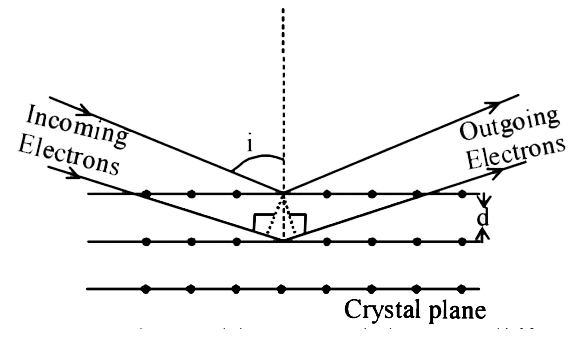Diffraction of the electron beam is an evidence of the fact that
Electrons repel each other
Light has wave properties
Electron has wave property
Electron has momentum
The correct Answer is:B
Step by step video, text & image solution for Diffraction of the electron beam is an evidence of the fact that by Chemistry experts to help you in doubts & scoring excellent marks in Class 11 exams.
Topper's Solved these Questions
- BOOK - NARAYNACHAPTER - STRUCTURE OF ATOMEXERCISE - CUQ (QUANTUM MECHANICAL MODEL OF ATOM)5videos
STRUCTURE OF ATOM
- BOOK - NARAYNACHAPTER - STRUCTURE OF ATOMEXERCISE - CUQ (QUANTUM NUMBERS)10videos
STRUCTURE OF ATOM
- BOOK - NARAYNACHAPTER - STRUCTURE OF ATOMEXERCISE - CUQ (BOHR.S ATOMIC MODEL)5videos
STRUCTURE OF ATOM
- BOOK - NARAYNACHAPTER - STATES OF MATTEREXERCISE - A & R TYPE QUESTIONS16videos
STATES OF MATTER
- BOOK - NARAYNACHAPTER - THERMODYNAMICSEXERCISE - Assertion- Reason5videos
THERMODYNAMICS
Similar Questions
Knowledge Check
- Question 1 - Select One
Wave property of electron implies that they will show diffraction effected . Davisson and Germer demonstrated this by diffracting electron from crystals . The law governing the diffraction from a crystals is obtained by requiring that electron waves reflected from the planes of atoms in a crystal inter fere constructiely

If a strong diffraction peak is observed when electrons are incident at an angle i from the normal to the crystal planes with distance d between them (see fig) de Brogle wavelength λdB of electrons can be calculated by the relationship (n is an intenger)Adsini=nλdBB2dcosi=nλdBC2dsini=nλdBDdcosi=nλdB - Question 2 - Select One
Diffraction of sound is more evident in daily lifte than light waves, because the than diffraction of light. Because the
AWave length of sound waves is greater than that of lightBSound waves are longitudinal, while light waves are transverseCVelocity of sound waves is less than that of lightDNone of the above - Question 3 - Select One
The study of diffraction of electrons from a target, gives the wavelength associated as 0.65Å. The energy of the electrons will be
A40eVB100 eVC356 eVD1000 eV
In Davission and Geremer experiment, an electron beam is incident on a crystal. In the diffracted beam there are
View SolutionIt is desired to obtain a diffraction pattern for electrons using a diffraction grating with lines separated by 10 nm. The mass of an electron is 9.11×10−31kg.
Suppose it is desired to observe diffraction effects for a beam of electromagnetic radiation using the same grating. Roughly, what is the required energy of the individual photons in the beam?View SolutionA beam of monochromatic light of wavelength λ falls normally on a diffraction grating of line spacing d. If θ is the angle between the second-order diffracted beam and the direction of the incident light, what is the value of sinθ ?
View SolutionIt is desired to obtain a diffraction pattern for electrons using a diffraction grating with lines separated by 10 nm. The mass of an electron is 9.11×10−31kg.
What is the approximate kinetic energy of electrons that would be diffracted by such a grating?View SolutionA parallel monochromatic beam of light is incident normally on a narrow slit and the resulting diffraction pattern is formed on a screen placed perpendicular to the direction of incident beam. At the first minimum of the diffraction pattern, the phase diffraction between the waves coming from the edges of the slit is
View Solution

